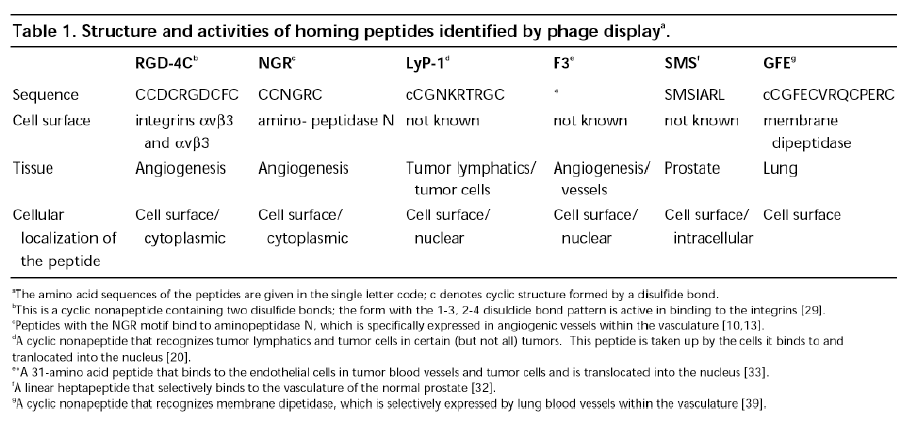|
Phage Selection Process

The
process of finding homing peptides is a long,
arduous, expensive process. The above
illustration schematically depicts the process in
finding a peptide that can target a specific tissue.
The process was first developed to be used in
vitro and then adapted for in vivo
screening. To start, a library of
peptide-expressing phages must be created.
Oligonucleotide vectors are constructed and
transformed into an E. coli culture.
Phage was extracted and screened for
surface-peptide expression. These phages can
then be injected into the tail vein of rats.
Phages which express peptide that bind to a specific
tissue, concentrate at that site. Tissue is
then harvested from the animal and is incubated with
a fluorescently-tagged antibody specific for the
phage. This will then allow the scientist to
visualize where the phage has localized. Many
times, the phage will not localize to a specific
site and will not be useful for targeted therapy.
If a phage is found to localize at a specific site,
the second step is to isolate the peptide which is
responsible for the phage homing. Uses DNA
sequencing, the homing peptide is then isolated and
can be mass produced. Through this process, it
has been revealed a strong heterogeneity amongst the
vasculature of different tissues. This has led
to the theory that tumors can be specifically
destroyed by targeting their vasculature. The
table below documents some of the peptides that have
been isolated through this process and the tissue
they specifically target.

Top illustration taken from Ruoslahti, Nature
Reviews Cancer, 2002
Bottom table taken from Ruoslahti, Drug Discovery
Today, 2002 |